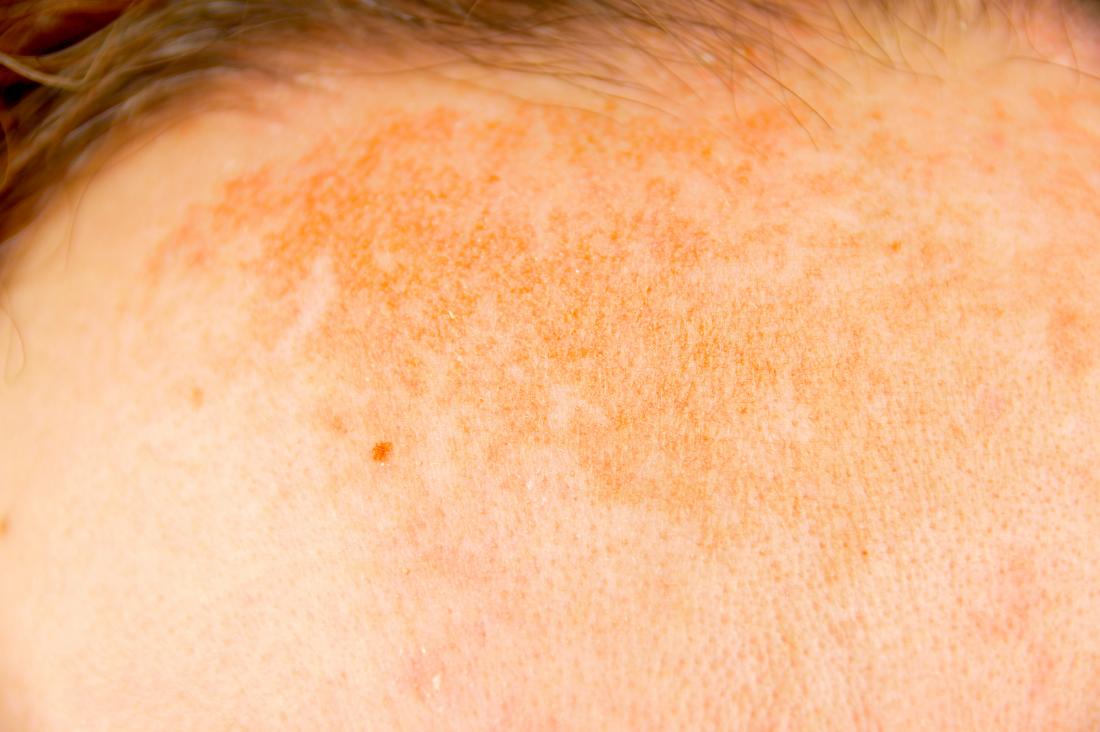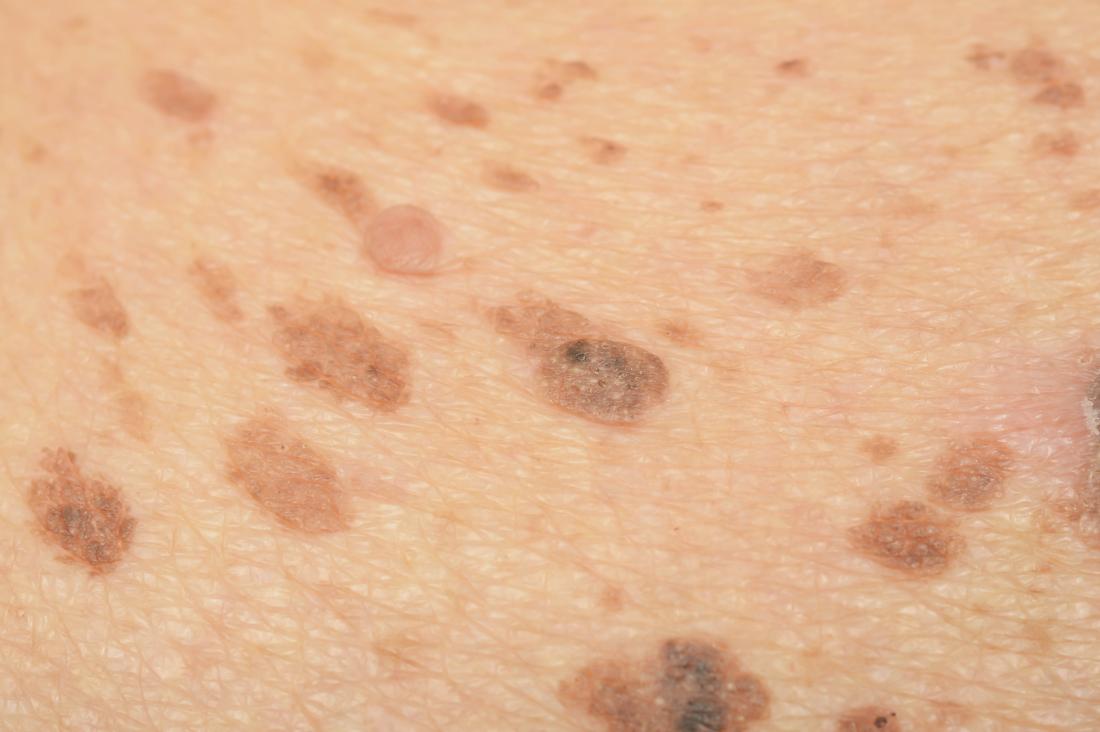Types of hyperpigmentation include age spots, melasma, and post-inflammatory hyperpigmentation.
Each of these has different cause and a range of treatments and products, including creams and cosmetic procedures. We discuss these below.
What is hyperpigmentation?

Hyperpigmentation is when patches of skin appear darker than the surrounding skin.
Hyperpigmentation occurs when the skin produces more melanin, the pigment that gives skin its color. This can make spots or patches of skin appear darker than surrounding areas.
Hyperpigmentation is a common skin condition. It affects people of all skin types.
Some forms of hyperpigmentation, including melasma and sun spots, are more likely to affect areas of skin that face sun exposure, including the face, arms, and legs.
Other types of hyperpigmentation form after an injury or skin inflammation, such as cuts, burns, acne, or lupus. These can occur anywhere on the body.
Having extra pigment in some areas of skin is usually harmless but can sometimes indicate another medical condition.
How to get rid of hyperpigmentation
Although hyperpigmentation* is harmless, some people wish to get rid of it. There are a range of possible treatment methods and home remedies that people can try.
To prevent hyperpigmentation*, or to stop it becoming more prominent:
- Avoid exposure to the sun. Use a sunscreen with an SPF of 30 or higher to protect the skin and stop hyperpigmentation from becoming darker.
- Avoid picking at the skin. To prevent hyperpigmentation from forming after an injury, avoid picking at spots, scabs, and acne.
People can try the following treatments to lighten dark patches of skin and remove hyperpigmentation:
Topical creams
Many people use topical treatments to treat hyperpigmentation*. Topical treatments will include ingredients that lighten the skin, such as:
- azelaic acid
- corticosteroids
- hydroquinone
- kojic acid
- retinoids, such as tretinoin
- vitamin C
Cosmetic procedures
Some cosmetic procedures can also lighten areas of skin to reduce the appearance of hyperpigmentation.
Cosmetic procedures for hyperpigmentation include:
- laser therapy
- intense pulsed light
- chemical peels
- microdermabrasion
People who are considering undergoing one of these procedures should discuss the process and possible side effects with a skin care specialist, or dermatologist.
Home remedies for hyperpigmentation
It may also be possible to lighten areas of hyperpigmentation* using natural remedies. However, there are no large-scale studies in humans to confirm that any of these remedies are effective.
If a person wishes to try a new treatment or natural remedy, they should always try the product on a small patch of skin first and stop using it if it irritates the skin.
A 2018 review study suggests that the following natural treatments may be able to reduce the appearance of hyperpigmentation:
Aloe vera

Aloe vera may help treat hyperpigmentation.
Aloesin, a compound that is present in aloe vera, may lighten hyperpigmentation. Aloesin works by inhibiting the production of melanin in the skin.
One study suggests that taking aloe vera capsules can relieve melasma in pregnant women.
People can apply aloe vera gel from the plant directly to the skin daily. However, no research has directly linked aloe vera to reduced areas of hyperpigmentation, so scientists do not yet know the effectiveness of using this technique.
Licorice
Licorice extracts may lighten hyperpigmentation*. Research suggests that a licorice extract called glabridin can have anti-inflammatory, antioxidant, and skin-whitening effects.
People can use creams containing glabridin on areas of hyperpigmentation*. Products containing glabridin are available at drug stores and online.
Green tea
Green tea extracts may improve hyperpigmentation*. Researchers have long studied green tea for its potential antioxidant and anti-inflammatory properties.
There is very limited research suggesting that green tea extracts can improve melasma and reduce sunburn. More research is needed before scientists can fully understand whether or not green tea can actually improve symptoms.
Types and symptoms
Below is a table of the most common types of hyperpigmentation and their symptoms:
| Type | Symptoms | Where on the body? | Who can it affect? |
| Age spots, also called liver spots or solar lentigines | Brown, tan, or black spots that appear on skin with sun overexposure | They commonly appear on the face and hands, or on sun-exposed areas of the body | Age spots usually appear on older adults or after extended sun exposure |
| Melasma, also called chloasma or “the mask of pregnancy” | Large patches of darkened skin | They often appear on the forehead, face, and stomach | Women, people who are pregnant or taking birth controlpills, and people with darker skin are more likely to develop melasma |
| Post-inflammatoryhyperpigmentation | Spots or patches of darkened skin that appear after an inflammatory skin condition, such as acne or eczema | They usually appear on the face or neck | People who have had inflammation or an injury to the skin |
Causes of hyperpigmentation
The cause of hyperpigmentation depends on the type. The most common causes of hyperpigmentation are:
Sun exposure
The body produces more melanin to protect the skin from prolonged exposure to the sun. This can cause dark spots or patches on the skin called age spots or sun spots.
Skin inflammation
Areas of skin can darken after people have had inflammation of the skin. This can include acne, eczema, lupus, or an injury to the skin. People with darker skin are more likely to develop post-inflammatory hyperpigmentation*.
Melasma
Darker patches of skin can form when people experience hormonal changes. This type of hyperpigmentation* is common during pregnancy.
Reactions to drug use
Certain medications, such as antimalarial drugs and tricyclic antidepressants, can cause hyperpigmentation* . In these cases, patches of skin may turn gray.
Chemicals in topical treatments can also sometimes cause hyperpigmentation.
Medical conditions
More serious causes of hyperpigmentation include Addison’s disease and hemochromatosis.
Addison’s disease affects the adrenal glands. It can cause hyperpigmentation in certain areas of the body, including:
- folds of skin
- lips
- elbows and knees
- knuckles
- toes
- inside of the cheek
Other symptoms of Addison’s disease include:
A person should see their doctor if they notice any of these symptoms.
Hemochromatosis is an inherited condition that causes the body to contain too much iron. It can cause hyperpigmentation, making the skin appear darker or tanned.
A person should see their doctor if they notice the following symptoms of hemochromatosis:
- fatigue
- stomach pain
- joint pain
- weight loss
Hyperpigmentation and melasma

Melasma affects more women than men.
Melasma is a type of hyperpigmentation. Melasma usually covers a larger area of skin than other types of hyperpigmentation, and it usually appears on the face.
Melasma mostly affects women, affecting men just 10 percent of the time. Other types of hyperpigmentation affect men and women equally. Melasma is more common in people with darker skin and may run in the family.
Doctors are still unsure about what causes melasma, but a change in hormones can sometimes trigger it.
Pregnancy and taking birth control pills can both cause melasma. Doctors sometimes call melasma the “mask of pregnancy,” as it can cause darker skin on the face. When a person is no longer pregnant, or they stop taking birth control pills, the melasma usually disappears.
Melasma can disappear on its own, but without treatment, it may not. People can fade or reduce melasma in the same ways as they would other types of hyperpigmentation.
Diagnosis
People with hyperpigmentation can see a doctor, who will be able to identify the type and cause. A doctor may take a small sample of skin, or a biopsy, to determine the cause of the hyperpigmentation.
Doctors can usually diagnose melasma and other types of hyperpigmentation* just by looking at the skin. They may sometimes use a special light called a Wood’s light to examine the skin.
A doctor or dermatologist will then be able to create a treatment plan if necessary.
Summary
Hyperpigmentation is a common skin condition that can affect many people for many reasons. Types of hyperpigmentation include age spots, melasma, and post-inflammatory hyperpigmentation*.
Hyperpigmentation is a harmless skin condition that people can get rid of using removal techniques such as cosmetic treatments, creams, and home remedies.
If a person notices other symptoms alongside hyperpigmentation, they should seek advice from their doctor.
If a person wants to treat hyperpigmentation* for cosmetic reasons, they can seek advice from a dermatologist, who will be able to advise them on the best treatment methods available.